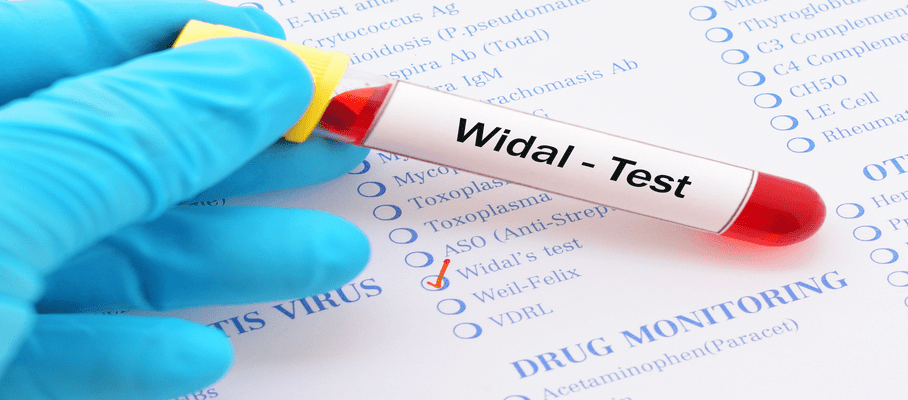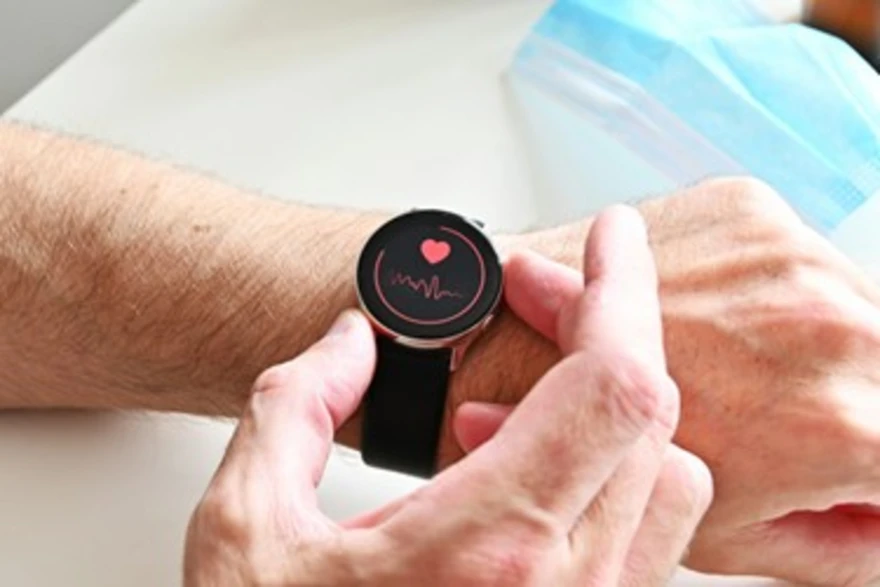Preventive Healthcare
Ankle-Brachial Index (ABI) Test: Detecting Peripheral Artery Disease Early

Table of Contents
- What Is the Ankle-Brachial Index (ABI)?
- Why Is the ABI Test Important?
- Who Should Get an ABI Test?
- How Is the ABI Test Performed?
- Uses of the Ankle Brachial Index Test
- Understanding ABI Results
- What Does a Low ABI Score Indicate?
- Limitations of the ABI Test
- Benefits of the Ankle Brachial Index Test
- How to Prepare for the ABI Test
- Is the ABI Test Painful or Risky?
- Follow-Up Tests After ABI
- Lifestyle and Treatment After Diagnosis
- Conclusion
- FAQs
What Is the Ankle-Brachial Index (ABI)?
The ankle-brachial index or ABI test is a simple, non-invasive screening test that compares blood pressure measurements at the ankle and the upper arm. This ratio helps evaluate blood flow in the legs and detects signs of peripheral artery disease (PAD), a condition where the arteries in the legs become narrowed or blocked. A normal ABI test indicates sufficient blood flow, while abnormal values suggest compromised circulation. The ABI test serves as a valuable tool for assessing vascular health and identifying individuals at risk for cardiovascular events.
Why Is the ABI Test Important?
The ankle-brachial index or ABI test holds great importance in the early detection of peripheral artery disease (PAD), often before symptoms become apparent. PAD is associated with an increased risk of heart attack, stroke, and impaired circulation in the limbs. Timely diagnosis through ABI testing allows for prompt intervention, preventing severe complications such as critical limb ischemia and amputation. Moreover, ABI results serve as independent predictors of cardiovascular events and overall mortality. Screening at-risk individuals with the ankle-brachial index test contributes to better management of vascular health and reduces long-term morbidity and mortality.
Who Should Get an ABI Test?
The ABI test for PAD is recommended for individuals at increased risk of developing peripheral artery disease. This includes:
- Adults over 50 with a history of smoking or diabetes
- All individuals over 70, regardless of risk factors
- People experiencing leg pain, non-healing wounds, or other signs of poor circulation
- Those with a family history of cardiovascular disease
Patients with multiple vascular risk factors can benefit from ankle-brachial index screening to detect early, asymptomatic disease and initiate preventive measures. Consult your healthcare provider to determine if the ankle-brachial index test is appropriate for you.
How Is the ABI Test Performed?
The ABI test procedure involves the use of a blood pressure cuff and a Doppler ultrasound device. First, the patient's blood pressure is measured in both arms to determine the brachial systolic pressure. Then, cuffs are placed just above the ankles, and the Doppler ultrasound test is used to detect blood flow and measure the systolic pressure in the posterior tibial and dorsalis pedis arteries. The ABI calculation involves dividing the highest ankle pressure by the highest arm pressure for each leg. The procedure is painless, typically taking 10-15 minutes, and requires no special preparation.
Uses of the Ankle Brachial Index Test
The primary use of the ankle-brachial index test or the ABI Test is to diagnose peripheral artery disease. Additionally, it helps:
- Assess the severity of arterial blockages
- Predict cardiovascular risks like heart attack and stroke
- Monitor the effectiveness of PAD treatments
The ABI test serves as a non-invasive screening tool in vascular clinics and primary care settings for patients with suspected or known arterial disease.
Understanding ABI Results
ABI test results are given as a ratio. A normal ABI ranges from 1.0 to 1.4, indicating normal blood flow to the legs. An ABI between 0.91 and 0.99 is considered borderline, while a value of 0.90 or less confirms the presence of peripheral artery disease. Severe PAD is indicated by an ABI below 0.4, suggesting critical limb ischemia. On the other hand, an ankle-brachial index above 1.4 may signify stiff, noncompressible arteries, often seen in conditions like diabetes or arterial calcification. Such elevated values can affect the accuracy of the ABI test, necessitating alternative assessments.
What Does a Low ABI Score Indicate?
A low ABI calculation of 0.90 or less is diagnostic of peripheral artery disease, indicating significant narrowing or blockage in the leg arteries. This reduced blood flow to the lower extremities can manifest as:
- Leg pain or cramping during activity (claudication)
- Non-healing wounds or ulcers
- Coldness or numbness in the feet
Severe PAD (ABI <0.4) poses a high risk of critical limb ischemia, potentially leading to tissue damage or gangrene. Additionally, a low ankle-brachial index correlates with increased cardiovascular risks, signaling the need for comprehensive risk factor management.
Limitations of the ABI Test
While the ankle-brachial index test is a valuable screening tool, it has certain limitations:
- Falsely elevated ABI values (>1.4) can occur in patients with arterial calcification, commonly seen in diabetes and chronic kidney disease.
- The test may not detect early or mild PAD or isolated arterial lesions.
- Reliability may be reduced in individuals with edema or leg ulcers.
- Performing the test requires trained personnel and specialized Doppler equipment.
Abnormal, borderline, or inconclusive ABI results may warrant further evaluation, such as toe-brachial index measurement or imaging studies, to ensure accurate diagnosis.
Benefits of the Ankle Brachial Index Test
The ABI test offers several advantages as a screening tool for peripheral artery disease:
- Non-invasive and painless procedure
- Quick and cost-effective
- Provides reliable assessment of lower limb arterial health
- Predicts cardiovascular event risk
Early detection of PAD through ankle-brachial index testing allows for timely intervention, reducing the risk of serious complications like heart attack, stroke, and limb loss. Regular ABI screening in at-risk populations facilitates proactive management of vascular health, ultimately improving patient outcomes. If you have concerns about your circulation, discuss the benefits of ABI testing with your healthcare provider.
How to Prepare for the ABI Test
Preparing for the ankle-brachial index test is simple:
- Wear loose, comfortable clothing that allows easy access to your arms and ankles.
- Avoid smoking or consuming caffeine for at least 30 minutes before the test, as these can affect blood pressure readings.
- Inform your healthcare provider about any medications you are taking, as some may influence the ABI results.
No fasting or special dietary restrictions are typically required for the ABI test procedure.
Is the ABI Test Painful or Risky?
The ankle-brachial index test is generally painless and carries minimal risks. You may feel some discomfort when the blood pressure cuffs inflate, but this is temporary. Rarely, individuals with severe peripheral artery disease may experience leg pain during the ABI test. The procedure is non-invasive and does not involve any needles, incisions, or radiation exposure, making it a safe diagnostic tool.
Follow-Up Tests After ABI
If your ABI test results are abnormal or inconclusive, your healthcare provider may recommend additional tests to further evaluate your vascular health. These may include:
- Toe-Brachial Index (TBI) measurement
- Pulse Volume Recording (PVR)
- Duplex Ultrasound
- Computed Tomographic Angiography (CTA) or Magnetic Resonance Angiography (MRA)
- Angiography
Follow-up tests help determine the extent and location of arterial blockages, guiding appropriate treatment decisions. Your healthcare provider will discuss the need for additional testing based on your individual ABI results and overall clinical picture.
Lifestyle and Treatment After Diagnosis
If you are diagnosed with peripheral artery disease based on your ankle-brachial index test, lifestyle modifications and medical treatment can help manage your condition and reduce cardiovascular risks. Your healthcare provider may recommend:
- Quitting smoking
- Regular exercise, such as walking
- Maintaining a healthy diet low in saturated fats
- Managing underlying conditions like diabetes, high blood pressure, and high cholesterol
- Medications to improve circulation and manage risk, such as antiplatelets or statins
In severe cases, interventional procedures like angioplasty or bypass surgery may be necessary to restore blood flow.
Conclusion
The ankle-brachial index test is a simple yet powerful tool for detecting peripheral artery disease early, allowing for timely intervention and improved patient outcomes. If you are at risk for PAD, discuss the benefits of ABI screening with your healthcare provider. At Metropolis Healthcare, we offer convenient at-home testing and personalised care to help you take control of your health.
FAQs
What does the ABI test measure?
The ankle-brachial index (ABI) test compares blood pressure in your ankle to the blood pressure in your arm. This ratio helps assess blood flow in the legs and identifies peripheral artery disease (PAD), a condition caused by narrowed or blocked arteries.
Can I eat before an ABI test?
Yes, eating is allowed before an ABI test. Fasting is not required. However, avoid smoking or consuming caffeine at least 30 minutes prior, as these can affect blood flow and influence results.
How accurate is the ABI test?
The ABI test is a reliable, non-invasive screening tool for PAD. It has good sensitivity and specificity. However, conditions like arterial calcification can cause falsely high readings, especially in diabetic or elderly patients. In such cases, further testing may be needed.
Does insurance cover the ABI test?
Most insurance providers cover ABI testing if it's considered medically necessary. Coverage may vary, so it's best to confirm with your insurer regarding costs and eligibility.
How long does the test take?
The ABI test usually takes 10–15 minutes. It’s quick and painless, often performed in outpatient or primary care settings.
Can the ABI test detect heart disease?
While the ABI test doesn’t diagnose heart disease directly, a low ABI is linked to higher risk for heart attack and stroke. It reflects widespread atherosclerosis and may prompt broader cardiovascular evaluation.
What is a normal ABI value?
A normal ABI is 1.0–1.4. Values of 0.90 or less indicate PAD. An ABI above 1.4 suggests stiff arteries and requires alternate testing.
Should I be worried about a low ABI?
Yes. A low ABI signals blocked leg arteries and increased cardiovascular risk. Early treatment and lifestyle changes can help prevent serious complications.























